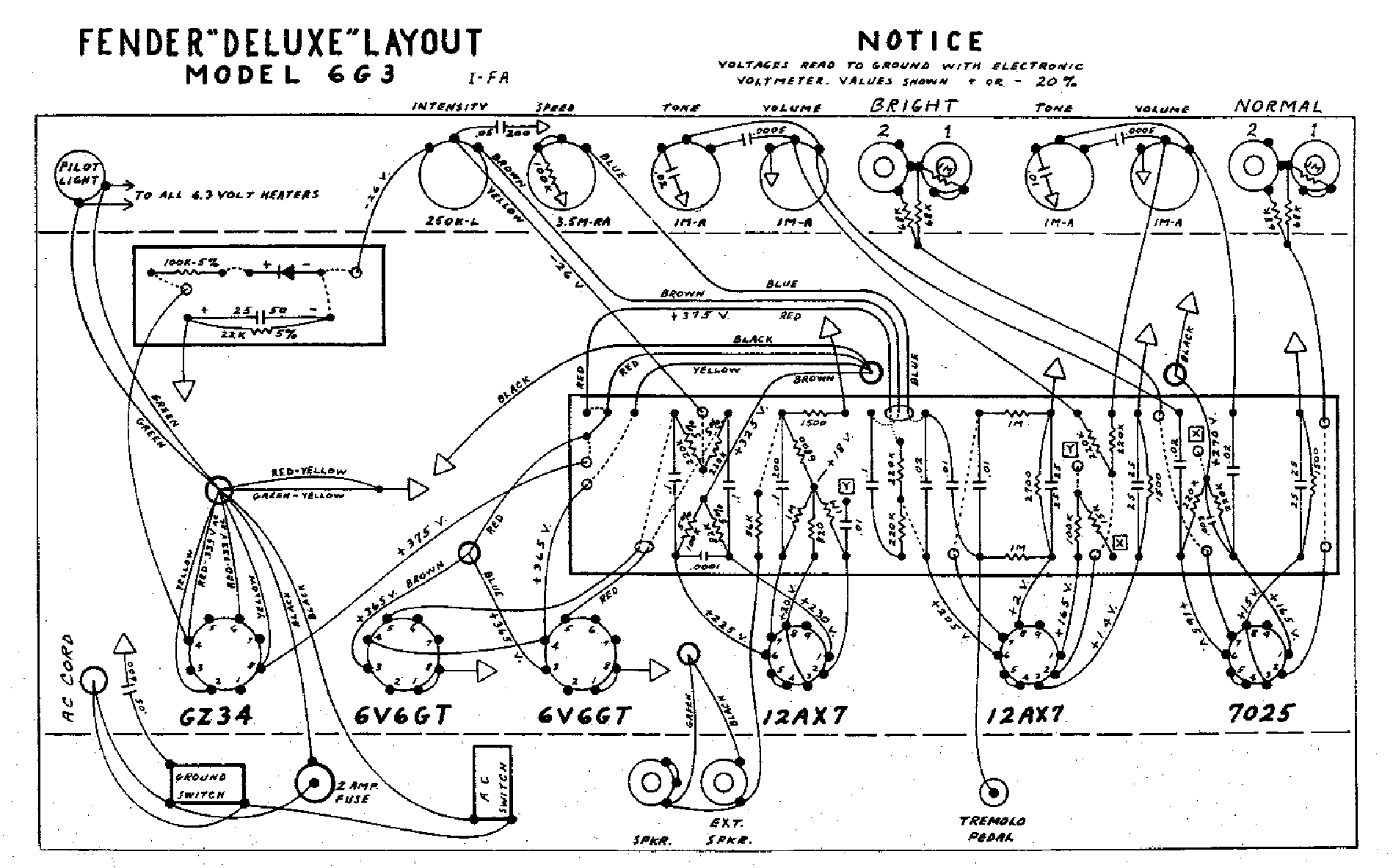Soundcheck
In this video, you’ll hear some first sound impressions of this amp. It does not disappoint!
After measuring, we find the bias isn’t ideal to run for a long time, so we go back in and look for a way to get it run more optimal.
Here’s a link to the whole video-series.
Time's the problem
So, this amp is build in the 1960’s. Here in Europe the wall voltages are today found between 225v and 235v. This amp’s transformer and rectifier just basically convert the voltage it gets from the wall. Where the rating on the schematic gives you 375v coming from the GZ34 rectifier, my first readings gave a whopping 418v!
The reason is that the power tubes that were in this amp where beautiful but slightly worn out Sylvianas. As the current draw from these became less, the plate voltages comes up. Now, there’s no problem just yet and you can run the amp until a tube blows but it’s going to sound a bit too clean, and more sterile and the whole circuit get’s that 2023 voltage to work with.
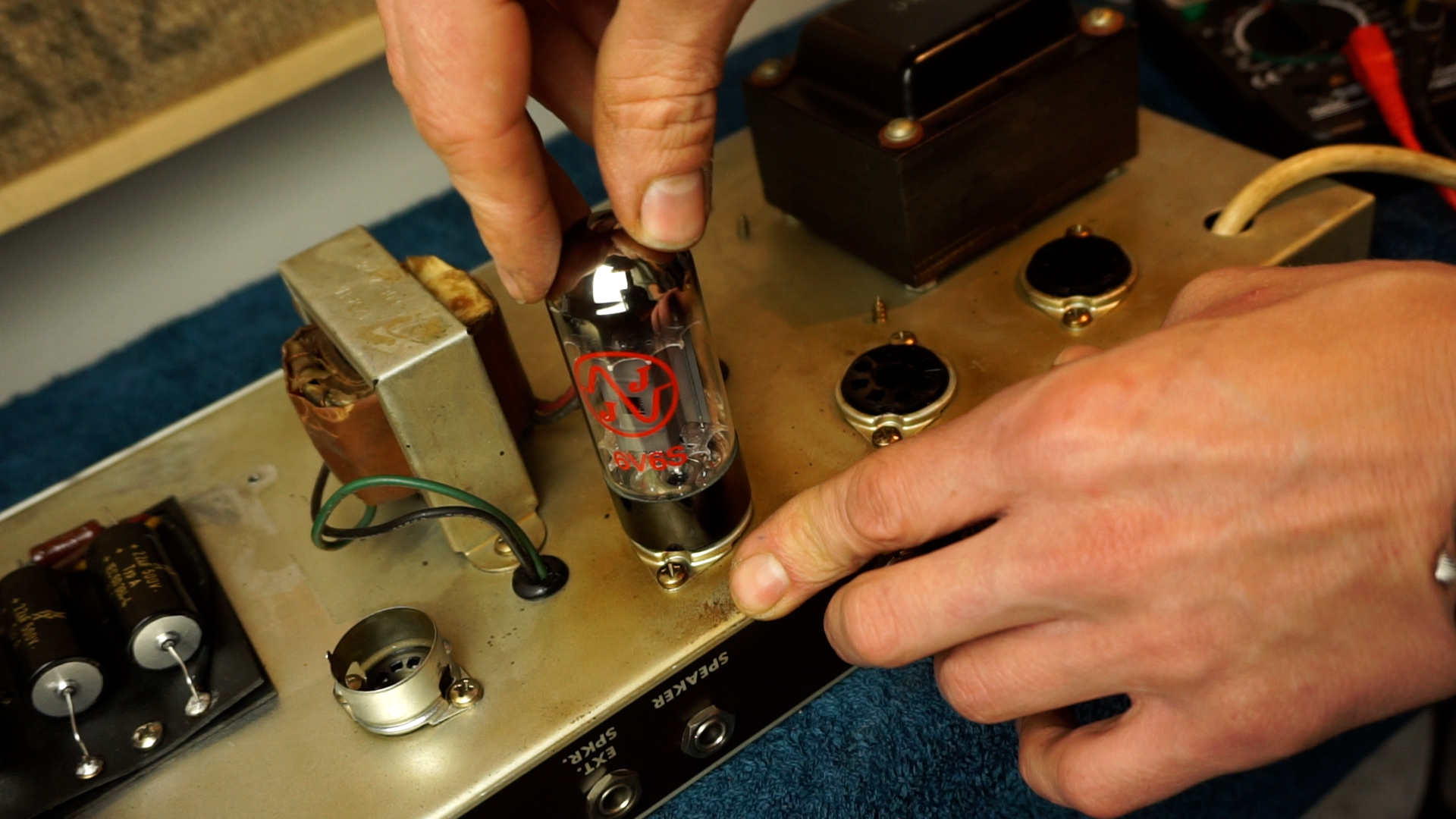
Importance of good Bias
The power tubes in this were also a little too mismatched with 17.8w and 12.5w so I’ve swapped to a new set of JJ’s. These are just sturdy and able to handle higher plate voltages and dissipation. The plate voltages came to 405v on the JJ’s, with the GZ34. Which is acceptable but the amp might not have it’s sweetness still and still get’s too much from the wall to work with. In order to optimize the amp, we need to find a way to lower the plate voltage still.
6v6 power tube ratings
In the classical sense a 6v6 is rated at max. 12w of output. In a single-ended amp such as the champ a maxed out bias is common as well as in the tweed deluxe due to it cathode biassed nature. In a fixed bias amp such as most Fenders like the deluxe, princeton, super reverb etc. a bias of 70% gives the best results though this is still subjective thing. Many players like SRV and Jim Campilongo openly gave out the they like an extremely hot bias to have the most clean headroom, at the expensive of the tube’s life.
A hot bias may come across as cleaner and louder, but can sound ‘cold’. Which is different then a ‘cold’ BIAS, were the clean headroom is reduced and early tube breakup more the idea. This can also provide cool weird harmonics, up to a point where things start to sound weird with too much harmonic interference. Too cold or too hot is both stressing the tube.
In this amp, the bias was beyond 100% but sounded great, so there you go. The 6v6GTA tubes can handle up to 14w by rating. The JJ’s are rated as normal 6v6’s, so max 12w, but in the real world they are sturdy enough to perform way above the rating on paper.
How To Measure Bias In a Fixed Bias Fender
Using the output transformer resistance method. (The least dangerous method)
We need a few numbers: The plate voltage, the output transformer resistance and the voltage drop between the plates and the B+.
1. With the amp warmed up, measure the plate voltages of the output tubes. (pin 3)
2. Measure the voltage drop between the Output transformer’s center tap and the plates.
3. With the amp switched off. Measure the resistance of the output transformer of the plates to the center tap.
4. Divide the voltage drop through those resistance numbers. That outcome is the plate current.
5. The plate current multiplied by the plate voltage is the plate dissipation or wattage.
The Readings I got
So…
In take 1 I got:
– Plate voltages of 418v and 415v.
– Voltage drop of 6.9 and 9.9
– OT resistance of 230 ohms.
So the plate dissipations are 6.9/230*418 = 12,54 and 9.9/230*415=17.86.
That’s with the GZ34 and the vintage Sylvianas.
In take 2 I got:
– Plate voltages of 403v and 403v.
– Voltage drop of 10.9 and 10.7
– OT resistance of 230 ohms.
So the plate dissipations are 10.9/230*403 = 19.64 and 10.7/230*403 = 18.74
That’s with the GZ and the new JJ 6v6 power tubes.
In take 3, with a 5Y3 rectifier, I got:
– Plate voltages of 386v and 386v.
– Voltage drop of 9.3 and 8.9
– OT resistance of 230 ohms.
So the plate dissipations are 9.3/230*386 = 15.64 and 8.9/230*386 = 14.93w
15,6w and 14,9w is where we call it a day as these are acceptable ratings, closely matched and this now works without changing any component in the vintage amp. The downside would be that the 5Y3 will introduce the sag we know from the 5E3 Tweed Deluxe. But we need to give it a lot of sound-checking time to decide. The GZ34 will be tighter and has that nice warm-up time but 30v more going into the amp. Perhaps there’s another version that corrects for it, or we need to modify the amp’s bias.
So Rectifying a solution
When it comes to a solution we can alter the bias resistor, modify it’s bias section to blackface specs to adjust it more easily, but we’d still have our high voltages. I’ve ended up replacing the GZ34 with 5Y3 rectifier to make the plate voltages come down to 386v on both sides, with the matched JJ 6v6’s.
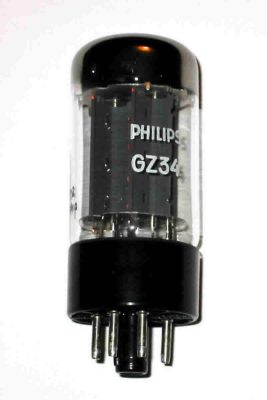
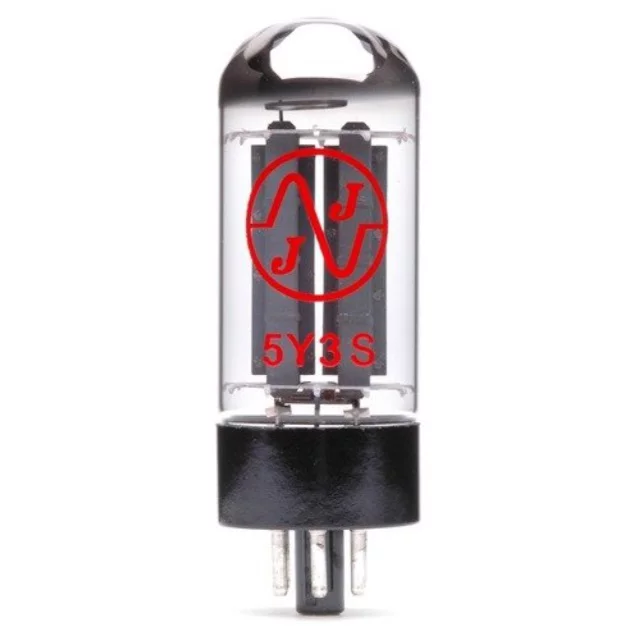
The Looks
In the next part, we’ll continue with the cabinet. Correct it’s looks to the best of our abilities!
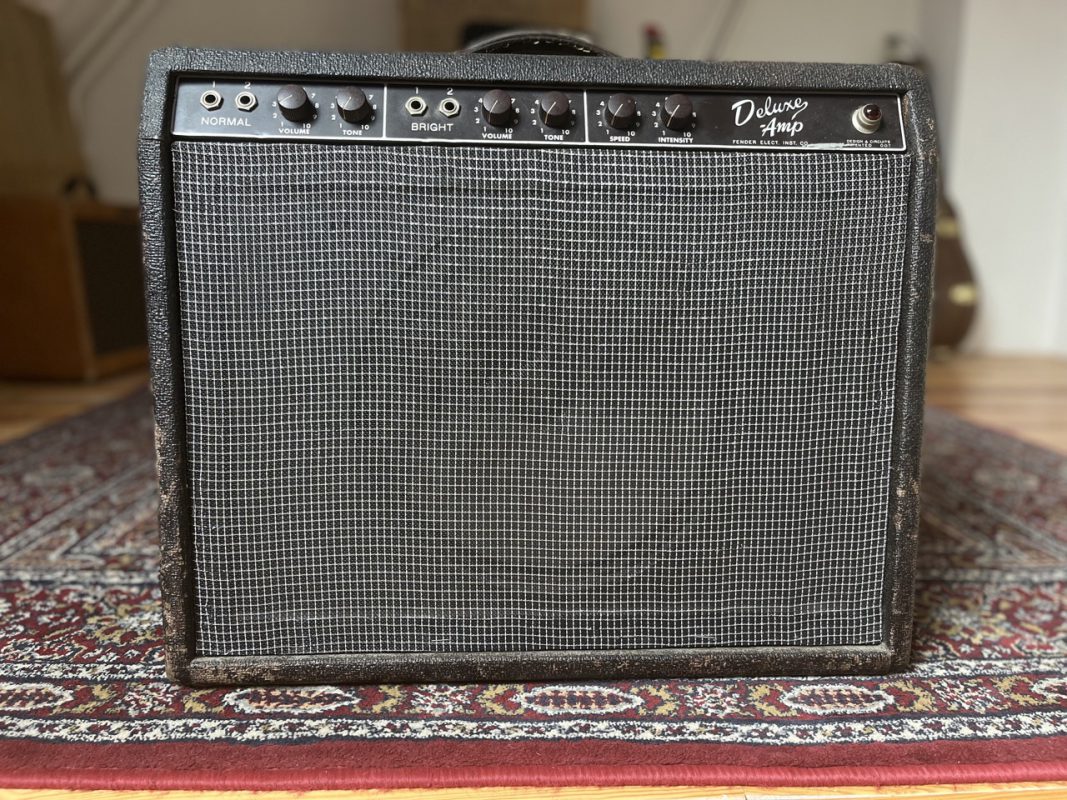
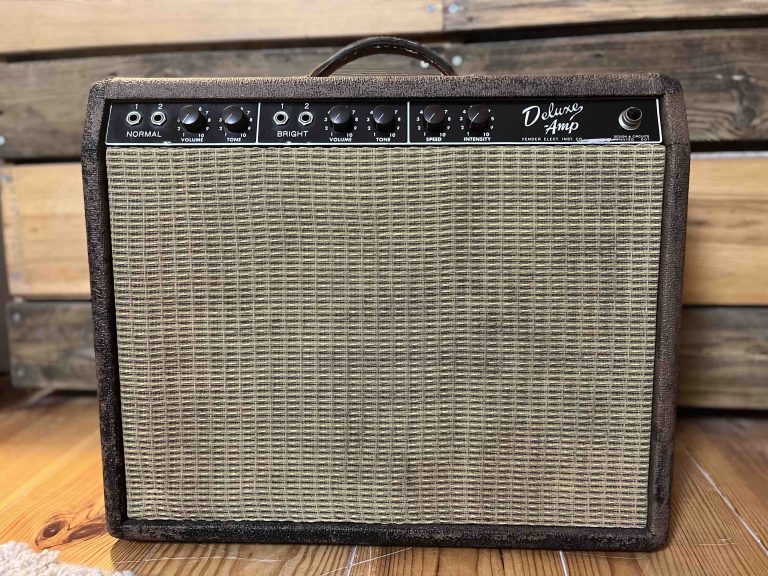
STAY TUNED…
